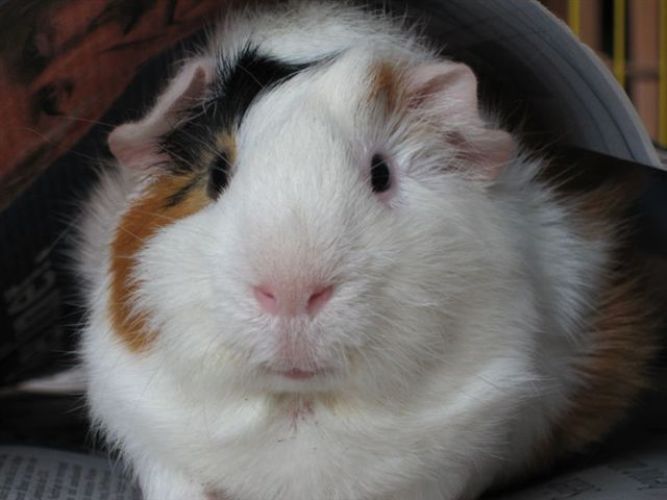

 :: Let's Classify!
:: Let's Classify! Scientific classification
 Domain:
Eukarya
Domain:
Eukarya
Kingdom: Animalia
Phylum: Chordata
Class: Mammalia
Order: Rodentia*
Suborder: Hystricomorpha
Family: Caviidae
Subfamily: Caviinae
Genus:
Cavia
Species:
Cavia porcellus
The common name is guinea pig, or cavy
TABLE DISPLAYING CLASSIFICATION
|
Eukarya |
Cells complex and enclosed in membranes |
|
Animalia |
Multicellular,
eukaryotic, heterotrophic, lack cell walls,
motile at some stage |
|
Chordata |
Notochord,
dorsal nerve chord, pharyngeal pouches,
endostyle, postanal tail (some point during
development |
|
Mammalia |
Hairy bodies,
suckle their young |
|
Rodentia |
Gnawing
incisor teeth-grow continuously |
|
Caviidae |
Tailless
South American rodent |
|
Cavia
porcellus |
Domestic
guinea pig |
IN-DEPTH DESCRIPTION OF GUINEA PIGS TAXONOMIC LEVELS
The domain that the guinea pig belongs to is Eukarya. This is because the cells of the organism are complex and are enclosed in membranes.
The guinea pig is in the kingdom Animalia because the organism is multicellular, eukaryotic, heterotrophic, lacking in cell walls and is motile at some stage in its life.
They are within the phylum Chordata because at some time during development they carry the traits of all chordates. These traits are defined by having a notochord (a skeletal rod), a dorsal, tubular nerve chord, pharyngeal pouches, an endostyle (thyroid gland), and a postanal tail.
The class Mammalia contains the guinea pigs because the creatures have hairy bodies and suckle their young.
Guinea pigs are put in the order Rodentia* because they are rodents that are characterized by their gnawing incisor teeth which grow continuously throughout their lives.
Caviidae is the correct family for guinea pigs because they are Tailless South American rodents with one pair of mammae and four digits on their front feet and three digits on their hindfeet.
The scientific name of the guinea pig is Cavia porcellus. The term porcellus is derived from the Latin word porcus meaning a hog or swine. Another name for the guinea pig is cavy, which was probably a result of the genus name Cavia.
The Latin name Cavia probably came from the Tupi sawiya via the Portuguese av’a/sav’a which means rat. The first person to use Cavia for the scientific name was t
he German zoologist Professor Pallas in 1766. Want to learn about the origin of the common name? Click here!
 Make sure
to check out the interesting
phylogenetic tree!
Make sure
to check out the interesting
phylogenetic tree!
*Guinea pigs, as of now, are officially classified as a rodent but there is debate still going on whether it should be or not. This article believes the guinea pig is not a rodent, as well as this one.
Scientists are basing some of their assumptions of the animal not being a rodent on the knowledge of the proteins in guinea pig blood and that they are unlike that of other rodents. Go to nutrition to learn more about this!
Even with researchers questioning the guinea pig being a rodent there are those that still believe it belongs in the rodent family like this website.



 :: LINKS
:: LINKS



 :: Learn More About:
:: Learn More About:

